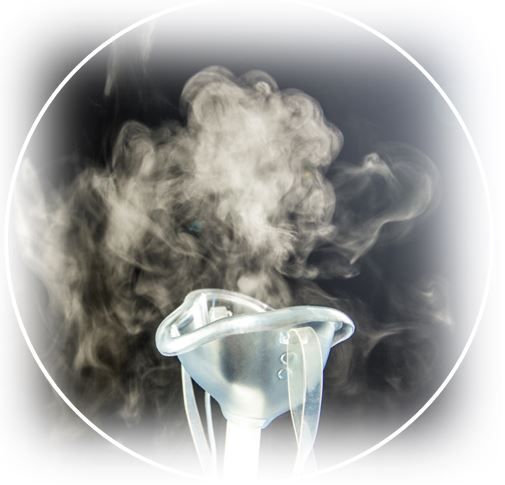- Clinical Technology
- Adult Immunization
- Hepatology
- Pediatric Immunization
- Screening
- Psychiatry
- Allergy
- Women's Health
- Cardiology
- Pediatrics
- Dermatology
- Endocrinology
- Pain Management
- Gastroenterology
- Infectious Disease
- Obesity Medicine
- Rheumatology
- Nephrology
- Neurology
- Pulmonology
Hyaluronan Improves Respiratory Failure in Acute Exacerbation of COPD
Hyaluronan represents a new class of biologic that significantly improves lung health in patients with severe COPD.
©FotoHelin/stock.adobe.com

Inhaling unfragmented hyaluronan improves lung function in patients suffering from severe acute exacerbation of chronic obstructive pulmonary disease (AECOPD), according to a study appearing today online in Respiratory Research.
The treatment also reduced time spent requiring breathing support while in intensive care and decreased length of hospital stay.
Hyaluronan is a sugar secreted by living tissue that acts as a scaffold for cells and is found in abundance in the lungs, according to study authors. Currently hyaluronan is used as an airway hydrating agent and also in cosmetics such as skin moisturizers. Hyaluronan, the authors write, ameliorates airway hyperresponsiveness in murine models and in humans, has potential anti-inflammatory properties, and improves lung epithelial injury.
Hyaluronan is approved in Italy for airway moisturization and that led co-senior author Stavros Garantziotis, MD, medical director of the Clinical Research Unit at the US National Institute of Environmental Health Sciences, part of the National Institutes of Health, to collaborate with colleagues in Rome to see if inhalation of high molecular weight hyaluronan (HMW-HA) would improve outcomes in AECOPD.
The single center, randomized, placebo-controlled, double-blind study investigated the effect of inhaled HMW-HA in patients with severe AECOPD that required non-invasive positive-pressure ventilation (NIPPV). The primary endpoint was time until liberation from NIPPV.
Patients were selected from admissions to the Intermediate Care Section, Geriatric Unit, Campus Bio-Medico, University of Rome, between March 2016 and July 2019. The primary criterion for study inclusion was a known history of physician-diagnosed COPD and acute exacerbation requiring NIPPV. After informed consent, patients were randomized 1:1 to receive either HMW-HA or identical-looking placebo.
Results
Out of 44 screened patients, 41 were included in the study (HMW-HA, n=20; placebo, n=21). Patients treated with HMW-HA had significantly shorter duration of NIPPV, lower measured peak airway pressures on the ventilator, and lower systemic inflammation markers after liberation from NIPPV. In vitro testing showed that HMW-HA significantly improved mucociliary transport in air–liquid interface cultures of primary bronchial cells from COPD patients and healthy primary cells exposed to cigarette smoke extract.
Baseline characteristics of the two groups were similar for demographics, medical history, admission lung physiology, and laboratory parameters.
There were no adverse events reported in either group.
“Inhaled hyaluronan qualifies as a stimulating aid for patients with exacerbated COPD, as it is safe and easy to administer,” explained co-senior author Dr Raffaele Incalzi, Department of Medicine, Campus Bio-Medico University and Teaching Hospital in Rome, Italy. “Furthermore, it acts locally, only in the bronchial tree and, thus, cannot interfere with any systemic drug.”
AECOPD may occur in > 90% of COPD patients and hospitalization is often required. Treatment for AECOPD remains limited, including bronchodilators, non-specific anti-inflammatory corticosteroids, and antibiotics, and novel, effective anti-inflammatory agents are needed.
The authors conclude: “Our study shows for the first time the therapeutic potential of an extracellular matrix molecule in acute exacerbation of human lung disease.”
